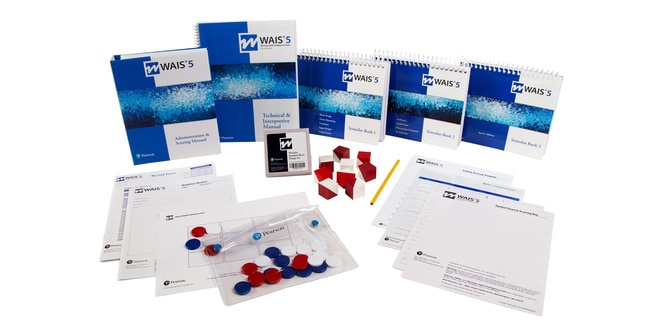The Wechsler Adult Intelligence Scale®, Fifth Edition (WAIS®-5) is the most advanced psychometric measure of adult cognitive ability, based on recent research in the area of cognitive neuroscience and the theories and work of David Wechsler, PhD. It is an individually administered clinical instrument for assessing cognitive ability. Guidance on using this test in your telepractice
WAIS-5 and WMS-5 are available.
WAIS-5 and WMS-5 are available.

Wechsler Adult Intelligence Scale | Fifth Edition
WAIS-5
The Wechsler Adult Intelligence Scale®, Fifth Edition (WAIS®-5) is the most advanced psychometric measure of adult cognitive ability, based on recent research in the area of cognitive neuroscience and the theories and work of David Wechsler, PhD. It is an individually administered clinical instrument for assessing cognitive ability. Guidance on using this test in your telepractice
WAIS-5 and WMS-5 are available.
WAIS-5 and WMS-5 are available.
Choose from our formats
Kits
Starter & complete kits, print & digital
4 options
Test forms & reports
Booklets, record forms, answer sheets, report usages & subscriptions
7 options
Support materials
Manuals, stimulus books, replacement items & other materials
15 options
Training
Onsite, virtual & on-demand trainings
22 options
All products
All tests & materials offered for WAIS-5
48 options
